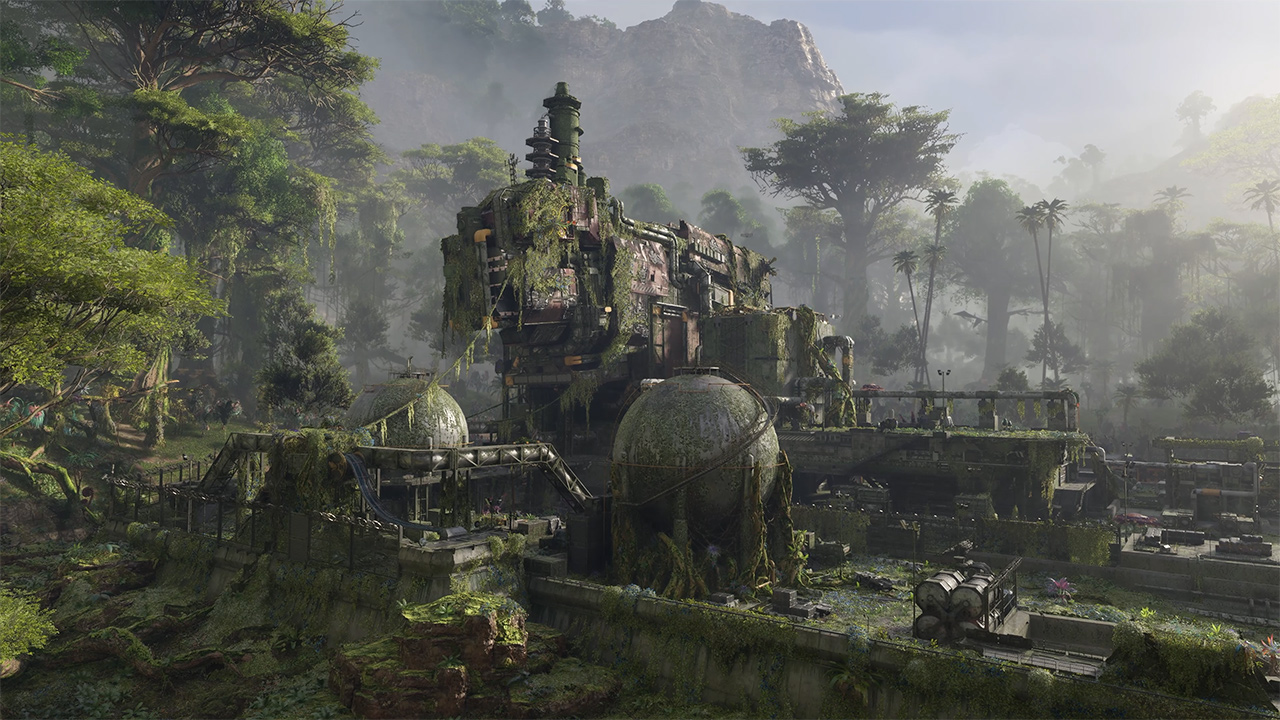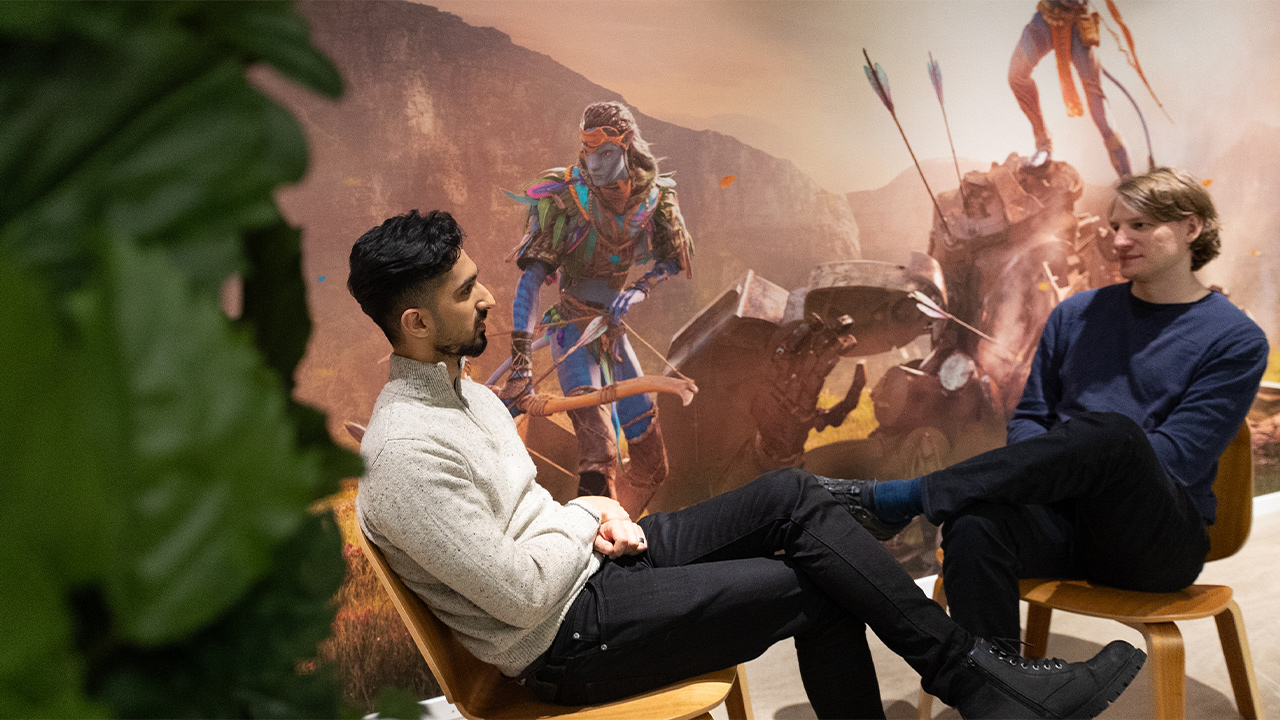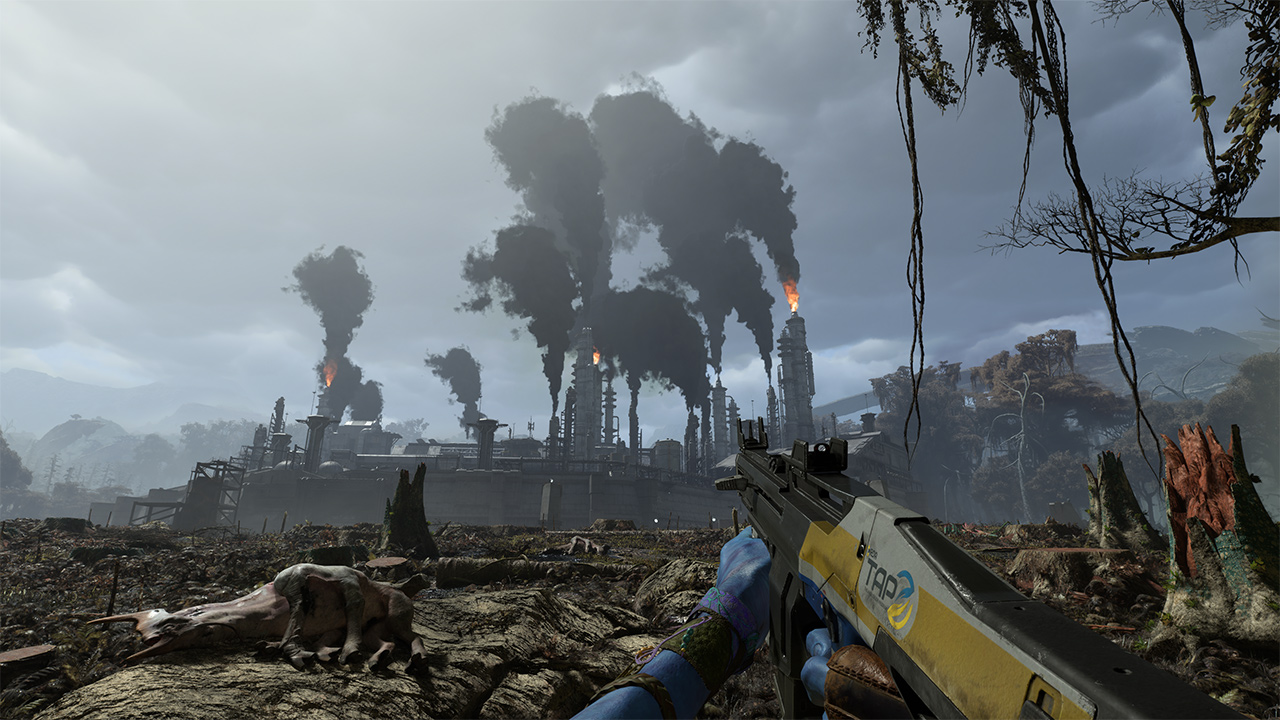Immersion is key in Avatar: Frontiers of Pandora. To help players really engross themselves in the world, and to connect them to the wild nature of Pandora, the Snowdrop team has implemented what they call the dynamic world system. The system interacts with other systems to create a living environment, where nature changes depending on the player’s actions.
“In Avatar: Frontiers of Pandora, the player can directly do things that affect the state of Pandora,” Kunal Luthra, Lead Technical Artist, says. “You defeat a big facility belonging to the RDA, the main bad guys of the game, that’s polluting the world around it, it will become abandoned and overgrown – nature will be reclaiming the area. The forest will recover from the pollution, animals will return. And as you push back the RDA across Pandora, you will see it directly reflected in the world around you.”

“The player can tell straight away when they are approaching a Resources Development Administration – the RDA – facility,” Kunal says. “The plants are dying around you; the wildlife is dying around you. Harvest materials are destroyed, and suddenly you can’t harvest anything. The pollution takes away gameplay opportunities, and the only way to get them back is to destroy the facility. And as soon as you’ve done that, you can see the pollution start to disappear in front of your eyes.”
The system was originally built for Tom Clancy’s The Division 2, where civilian settlements get upgrades as the player helps them recover. It has then been expanded and built upon for Avatar: Frontiers of Pandora.
We can change almost anything. We can change the geometry of the level area, we can load and unload entities we no longer want.”
“We can change almost anything. We can change the geometry of the level area, we can load and unload entities we no longer want,” Daniel Edenbrandt, Senior Gameplay Programmer, says. “We can have new geometry for the animals and NPCs to traverse. It also affects the shaders, that decide how objects and environment look, so even when we don’t change anything gameplay-wise or geometry-wise in a wider area, we can change how we render the plants and environment using what’s called vertex shaders and pixel shaders.”

The system is also built this way to empower the game’s level designers, as it gives them the opportunity to create bases with engaging gameplay together with detailed environment.
“We have scripts in the Snowdrop editor to help the designers generate a variety of foliage depending on what area of the map you end up placing your base,” Kunal says. “You can design it once, and then the system spawns the correct plants automatically based on that. This means that we can create the most immersive world for our players, where the lush and vibrant vegetation populates the entirety of the vast landscapes of the Western Frontiers of Pandora.
We show and hide whatever is appropriate, with bespoke geometry. It’s like layers in Photoshop, essentially.”
“When you design a facility, you place the props and everything that should always exist, then you place the props that should only exist when it’s operational and then props for when it’s abandoned,” Daniel says. “Then we show and hide whatever is appropriate, with bespoke geometry. It’s like layers in Photoshop, essentially.”
Pollution is a whole system in itself, that directly interacts with the dynamic world system.

“The way it’s set up, any gameplay system can access the pollution, and it is also available to graphics shaders running on the graphics card using a pollution texture,” Daniel says. “We can have any range of pollution and if we wanted to, we could define the amount of deterioration on any material or gameplay object – like a harvestable, for example – using these shaders, instead of having multiple versions of the same object just to showcase the amount of pollution.”
The goal of the dynamic world system was to tie everything together and to make every landmark unique. It’s meant to give the player an incentive to go back to previous areas to reexplore places they’ve already visited and to create a sense of the passage of time. But it’s also a part of the game’s message.
“The basic purpose of the dynamic world is to show how bad human actions can be for the environment, but that we can take it back and help it recover,” Kunal says. “The facilities will still be there, but as you progress, they will be taken back by nature.”
More from Snowdrop
- Shining a Light on Pandora, Snowdrop’s Ray Tracing
- Crafting Pandora’s Breathtaking Landscape, Snowdrop’s scattering system
Avatar: Frontiers of Pandora™ © 2023 20th Century Studios. Game Software excluding 20th Century Studios elements: © 2023 Ubisoft Entertainment. All Rights Reserved. Avatar: Frontiers of Pandora™ and the 20th Century Studios logo are trademarks of 20th Century Studios. Licensed to Ubisoft Entertainment by 20th Century Studios. Ubisoft and the Ubisoft logo are registered or unregistered trademarks of Ubisoft Entertainment in the U.S. and/or other countries.
















